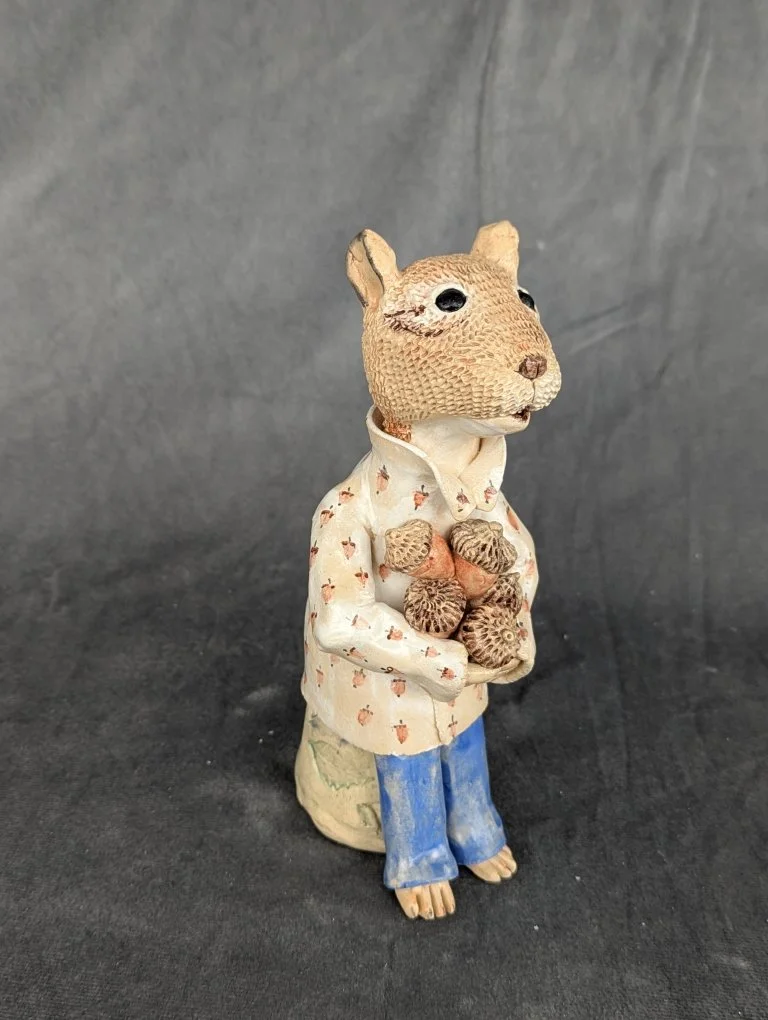The Montgomery Museum of Art and History will showcase Debby Freed’s “Animalia: A Menagerie of Whimsical Hand-built Ceramic Sculptures.” Among these delightful creatures is a collection titled “Animals of Assisi,” inspired by the 13th-century friar and patron saint of animals. Freed’s interpretation of these clay animals depicts them nurturing and caring for the young of another species, rather than their own offspring.
One collection in the exhibit employs the sgraffito technique. Unfired clay animals are first painted with black underglaze, and then tools are used to carve off some of the black paint leaving intricate black and white designs. A sgraffito cow in this exhibit has all white horns and beautiful patterns on its body. After the design is completed, the sculptures are bisque fired in the kiln. After all that work, what a tragedy it would be if one of them broke during the firing process. However, Freed has solved this problem by using a very slow bisque firing technique. Ceramics can crack in the kiln when water vapor trapped in the pores expands. With the bisque technique, the kiln is heated to a low temperature and held until the water escapes. Then the temperature is raised to complete the firing process.
Freed sculpts in clay using slab, pinch, and coil techniques. Pinch pots are made by shaping clay with fingers, coil construction uses rolled clay strands, and slab construction uses flat sheets of clay. She finds inspiration in the wild animals that roam around her farmette near McCoy, as well as her own domestic animals. There’s a friendly dog, a decidedly unfriendly cat, some adorable chicks, and a neighbor’s donkeys. Examples of the animals depicted in this exhibit are a chipmunk with nuts, a bear holding a cup, and a vulture, cat, rat, hawk (all animals of Assisi) and a whale. All right, the whale doesn't live around here.
The Appalachian String Band series features animals playing the bass, banjo, guitar, and fiddle.
Although Freed rarely loses a piece in the kiln, she has occasionally had some small appendages broken. Just as the Greek and Roman sculptures lose arms, her owls get their fragile talons broken off. A seasoned problem solver, Freed started making the talons of Apoxie® Sculpt, which combines the features and benefits of sculpting clay with the adhesive power of epoxy. Using a variety of materials is a feature of her work. A rooster sculpture has a beaded necklace in its comb.
Debby Freed grew up in Chapel Hill, North Carolina, so she feels at home in a college community. She graduated from the University of North Carolina and has a master's degree in creative writing from the famed program at Hollins in Roanoke.





